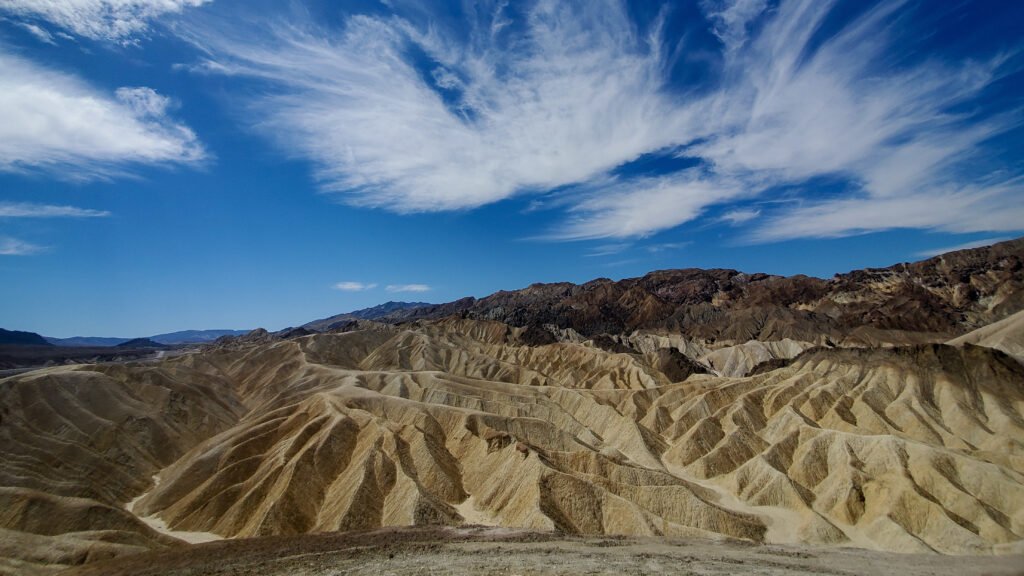
The Controversy of Death Valley’s 134-Degree Temperature Record: Unveiling the Debate
Death Valley heat is in the news again as temperatures have climbed to near 130 degrees Fahrenheit, and an ongoing heat dome has persisted across the southwestern United States.

Image: SRN News
In the realm of weather records, one particular measurement has garnered considerable controversy and fascination over the years: the recording of a scorching 134 degrees Fahrenheit (56.7 degrees Celsius) in Death Valley, California, on July 10, 1913. Death Valley is one of the hottest places in the United States, and indeed the world, but nonetheless, this exceptional temperature has sparked discussions among experts, fueling debates about the accuracy and reliability of the measurement. In this article, we will delve into the controversy surrounding this remarkable record and explore the differing perspectives surrounding its authenticity.
The measurement of 134 degrees Fahrenheit in Death Valley was achieved using a standard mercury thermometer, the prevailing instrument of the time. In fact, those mercury thermometers of days past are actually more accurate than the digital thermometers used today. It stood as the highest reliably recorded temperature on Earth for over a century. However, doubts and debates have emerged regarding the accuracy of this record.
Before going any further, however, in spite of the accuracy of mercury thermometers, it is not a foolproof method of accurately recording temperatures; accidental or intentional mismanagement of temperature readings is certainly a possibility. It should also be noted that such a decertification of a weather record is not without precedent; in fact, a 136 degree temperature reading in Libya in 1922 was decertified as the world’s hottest temperature reading in 2012.
One of the primary concerns raised by skeptics is the potential impact of various factors on the accuracy of the measurement. One argument posits that the thermometer used in the recording may have been exposed to direct sunlight, leading to higher readings. Additionally, critics question whether the instrument could have been influenced by the heat generated from nearby vehicles or other sources. These factors could have potentially skewed the recorded temperature.

Photograph of old Greenland Ranch Station, California, USA (Arizona State University)
Death Valley is renowned for its extreme temperatures and harsh climate, making it a hotspot for weather enthusiasts and researchers. The valley’s unique geography, with its below-sea-level basin and surrounding mountain ranges, creates a microclimate that amplifies heat accumulation. This distinctive setting contributes to the plausibility of record-breaking temperatures. And after “examining the temperature record in detail, it has been posited that this temperature may have been the result of a sandstorm that occurred at the time. Such a storm may have caused superheated surface materials to hit upon the temperature in the shelter.” (Arizona State University)
Skeptics point to the fact that in the area where the temperature was
The debate surrounding the 134-degree temperature record highlights the significance of accurate and reliable weather data. Weather records shape our understanding of climatic patterns, enable climate research, and aid in climate change analysis. As technology and measurement techniques advance, ongoing efforts are made to improve the accuracy and precision of temperature recordings, providing us with a clearer picture of our changing climate.
I have neither the academic background, capacity for research, or quite frankly the time to confirm or deny this record, definitively refute those who claim it as invalid, or offer my own analysis of the situation. What I will say, however, is that I do not think it is helpful when historians or scientists attempt to refute an event as having a 0% chance of not occurring, which Christopher Burt does here, “The old Death Valley record from July 1913 is 100% bogus (not just 99.9% such), as are all other temperature readings of 130 degrees Fahrenheit or higher from Africa in the past,” Burt said. (Yale Climate Connections).
That being said, he also offers the best proof I’ve seen that the record did not occur in his 2016 Weather Underground blog post, where he attempts to prove that the meteorological conditions make the temperature impossible.
A couple quotes from that article are that the temperature is not necessarily “impossible”, but at least 4.5 standard deviations from the mean temperatures between 1911-1960 at the Death Valley Station, and would likely occur about one day in every 650 years.
To that, I will respond with the fact that Midwest received a 500 and a 1000 year flood in the span of a few years in the mid-2010’s. But I once again caution my readers that I do not, and cannot, refute the temperature or offer a counterpoint to skeptics, and I am biased in favor of leaving the record as is.

Graeme Maclean/Flickr (CC BY 2.0)
And yet, here we find ourselves 110 years later, coming far too close for comfort to the record event, and with more intense, prolonged, and frequent heat waves as a result of the climate crisis, perhaps this record will be simply broken, and the dispute laid to rest.